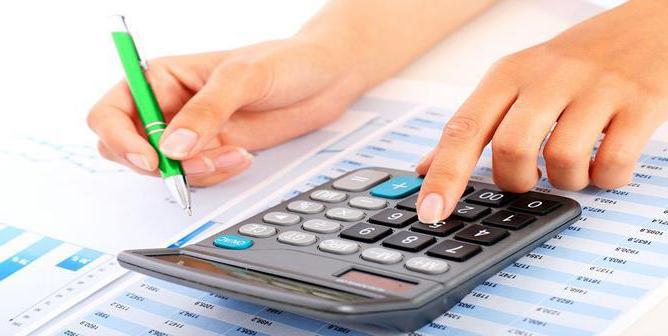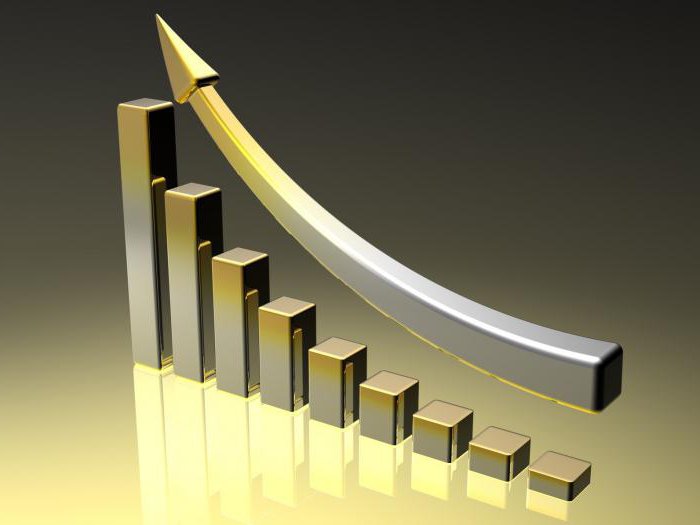To survive in a market economy, it is important to prevent the ruin of the enterprise. And for this it is necessary to competently manage the funds, navigate the structure of capital, financial stability and the degree of risk. How effective is the financial cycle and the whole organization of the company’s work, is revealed through a comprehensive analysis of the activity of the company.

Analysis of business activity indicators allows us to identify how organized the structure of the enterprise is capable of stable functioning, as well as development under any changing conditions of both external and internal environment. Proper analysis allows you to study the state of capital of a particular company in the process of its circulation, to find and eliminate all the deficiencies in the organization of activities and identify reserves for improving the financial condition and solvency of the company.
To whom and why is an analysis of the enterprise necessary
Evaluation of business activity allows you to predict financial results based on real-world economic conditions with the existing ratio of own and borrowed funds. The results of checking the performance of an enterprise or organization are necessary, first of all, to the owners (owners) of this production, as well as to investors, creditors, tax services, suppliers and all those who are or are only planning to become one of the financial links of this business.
What are business activity indicators based on?
In a broader sense, the business activity of an enterprise means its activity in promoting products to the market, expanding production volumes. Financial indicators should increase, and in general, economic growth should be observed. In a more subjective understanding, business activity includes an assessment of the production, business and commercial activities of an enterprise.
The business activity of the organization depends on numerous factors, for example, on the specifics of the activity, the consumer market, production and price factors, and the presence of competitors. The analysis allows us to see the profitability of the main production activities. Such indicators of business activity as revenue from sales of manufactured products on the sales market, pace of its sales, profitability per unit of the product, implementation of the production plan, and rational use of available resources make it possible to evaluate the effectiveness of the enterprise.

Production and commercial cycle
The financial situation and solvency of the enterprise depend on how quickly the money invested in assets goes through the cycle of conversion into real money. The duration of the funds in circulation is directly affected by various external and internal factors. The former include industry affiliation, scope and scale of the organization; the impact of inflationary processes and the characterization of relations with partners. As for internal factors, this is, in fact, the organization’s pricing policy, the use of working capital, stocks, etc. Thus, for carrying out analytical work to assess the business activity of an enterprise, two groups of indicators are used: asset turnover and performance indicators of their management.
Accounting is the basis of analytics
The main source for the analysis of the use and formation of funds and circulating operations is the balance sheet. For a simpler and more visual presentation of all the information, the balance sheet of the organization is presented in an aggregated form, that is, for this, the components of the balance sheet items that are uniform in composition are combined into certain analytical segments.

Also, in addition to the balance sheet, other forms of financial reporting are mandatory used, which includes operational data on the receipts and expenditures of material and cash, and other information on the turnover of assets of the enterprise. To summarize and agree on information from reporting documents, the General Ledger and other books and documentation, as well as negotiable and inventory sheets, will be used. Most enterprises have the following scheme characterizing the production and commercial cycle: the first item is the procurement of inventories, the second item is production, the third is storage of finished products, and the fourth is sale.
Business activity ratios
Testing of business activity consists in studying the level and dynamics of various financial ratios, which are indicators of the circulation of funds in an organization. They are very important, because the size of the full annual turnover also depends on the speed of turnover of funds. In addition, with the size of the turnover, and, therefore, with the turnover, the coefficients of business activity and the value of relatively fixed costs are associated, that is, the less time is spent on each turnover, the less expenses are spent on each subsequent one. If asset turnover is accelerated at any stage, this leads to an acceleration of turnover at the other stages.

Indicators and Indices
The business activity index in the economy is a special numerical indicator that is used to reflect the state and assess the situation of a particular industry. Indices are different, and it depends on the economic sector in question. The very concept of IDA is directly related to the concept of economic cycles. Because, according to the theory, the economy is developing unevenly, and its growth occurs cyclically. As a result, to simplify the assessment of the state of the enterprise’s economy, business activity indices are also used. Of particular importance is the business activity index in macroeconomics and the securities market. Today, many organizations are involved in calculating the index. The calculation is performed according to specially developed techniques.
Interpretation of the index as a source of information on business trends
The main key concept of the index is the leading indicator of the business cycle, where the key word is “leading”. For its interpretation, a number of values have been identified, the so-called cyclic minimum and cyclic maximum. If after the past growth period there is a reversal of the index, this indicates that the business cycle of the enterprise has to move from the growth stage to a decline in business activity. If the index turns up from the minimum point, this is regarded as a prediction of a future recovery.
The fall of the index below the level of 50 points portends a recession on average for two calendar months. Securities market professionals use fundamental analysis to assess trends in stock exchanges and stock markets. The conclusions of the fundamental analysis proceed from the premise that in the global economy it is macroeconomic trends that have an impact on stock prices of specific companies and other market instruments. And therefore, in the fundamental analysis, historically developed indices of business activity are used.

Business activity ensures the financial stability of the enterprise
Before identifying indicators of business activity, it is important to understand that for an enterprise this is one of the most important characteristics of the economic situation and, of course, the specifics of the development of activity. But at the moment there is far from the only definition of this concept. Moreover, absolutely all of them give this or that characteristic of this category.
The analysis of business activity is based on the results and effectiveness of the currently operating production activities. Based on this, the main criteria are determined on the basis of which a direct assessment is carried out. And if you specify more specifically, we mean the following indicators of business activity:
- The scale of product sales markets.
- Availability of products and the percentage of their supplies for export.
- The degree of brand awareness of the enterprise, reputation among consumers.
Growth Criteria
Financial indicators of profit should increase at a faster rate than all other parameters taken into account. This means that indicators of production costs should be reduced, and assets, including property, should be used more rationally. In principle, it often happens that even stably operating enterprises have deviations from the above ratio of indicators.
The reasons can be a variety of phenomena. This includes the development of new types of products or technologies, updating and modernization of property assets, and large investments as a result of this, as well as the reorganization of the managerial structure of production. Often, these factors are caused by the external economic environment, and therefore require significant financial costs that will pay off only in the long term.

What to focus on
According to the estimates of professionals specializing in financial management consulting, it was concluded that the profitability, business activity and financial turnover of the enterprise can be significantly increased due to the overall savings that the company will receive from rational financial management. More specifically, this means that inventory management can provide 50%, management of finished goods inventory and receivables will provide 40% of the total savings, and the remaining 10% can be obtained from rationalizing our own production cycle management. The main attention should be focused on financial management, since it is they that allow you to get 90% of the savings of all the opportunities available at this enterprise.
Similar conclusions can be drawn about increasing or decreasing profitability. That is, in the event of a slowdown in turnover, it is necessary to compensate for it with greater profitability, lower costs, lower costs, etc. If there is no way to increase profitability, you should correct the situation by turnover, producing and selling more products.
Analysis Methods
Economic analysis is the execution of a large volume of various calculations: average values, absolute and relative deviations, variances, percentages, etc. In the course of analysis, various types of estimates are made by comparing, grouping and sorting the existing source data, as well as finding the minimum or maximum value and a number of other operations.
The results obtained require a graphical or tabular presentation. Analytical processing and the whole variety of types of economic information become an object of automation performed using modern computing tools, as well as using the latest software products specifically designed for economic analysis.
Criteria for evaluation. Scheme
When it is necessary to analyze the composition and structure of the existing property of an enterprise on the basis of indicators of the balance sheet, sources of formation of the property of the enterprise, and also on the basis of the liability of the balance sheet, the absolute indicators include the amount of invested capital (assets), revenue (volume) from sales and profit. Costs are presented as capital invested in assets, but profit is represented as the difference between sales revenue and costs.
The best option for the relationship between the growth rate of assets, revenue from sales and profits can be expressed as follows: Ta> Tv> Tn, where:
- Ta - The growth rate of assets,
- TV - The growth rate of revenue from sales,
- Tp - The growth rate of profit.
But it should be noted that the company does not always comply with this formula, since the growth rate of assets may well be higher. And, as a rule, most often this can occur as a result of large investments.

Assessment of dynamics by comparing changes in pace
The above ratio means higher rates of profit in comparison with the volume of sales of products. This indicates a slight decrease in production costs. This is one, the second - sales volumes increase at a faster pace than the existing assets of the organization. And the third aspect is the increase in economic potential in comparison with the previous period. In general, this ratio is called the "golden rule of the enterprise economy" in world practice.
Analysis of enterprise growth sustainability
The identification of sustainable economic growth of the enterprise suggests that bankruptcy does not threaten him. The likelihood of bankruptcy can only be in the case of unsustainable development. In this case, the managers and management of the company would have to set themselves a serious task - increasing business activity and urgently ensuring a steady pace of economic development. In such a situation, they would face a logical question: what methods to use to restore and maintain stable growth rates.
As you know, it is possible to increase the level of business activity, the volume of output and sales of products through the growth of the property of the enterprise, i.e. assets. This, in turn, will require additional financial resources. Their inflow can be provided at the expense of external and internal sources of financing. As additional inflows, you can use sources such as loans, creditors' funds and bank loans. Timely identification of emerging problems of the enterprise allows you to take measures in time to restore its economic stability, thanks to the assessment and analysis of activities.








